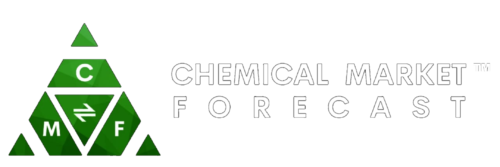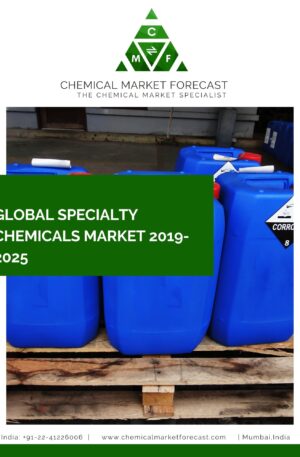Global Super Absorbent Polymers (SAP) Market Report
Super Absorbent Polymers (SAP) are hydrophilic polymers that have the ability to absorb and retain large amounts of water or aqueous solutions. These polymers are widely used in a variety of applications, including personal hygiene products, agriculture, medical, and industrial applications. The market for SAP is expected to grow significantly in the coming years, driven by increasing demand from key industries and applications.
The personal hygiene products segment is one of the largest users of SAP, with the demand for disposable diapers, adult incontinence products, and feminine hygiene products driving the market growth. SAPs are widely used in these products to improve absorbency and provide increased comfort and convenience for users. As the global population continues to grow and urbanization increases, the demand for personal hygiene products is expected to continue to rise, driving the growth of the SAP market.
In addition to personal hygiene products, SAPs are also widely used in agricultural applications, particularly in water-sensitive areas. SAPs are used in agriculture to improve soil quality and water retention, leading to increased crop yields and reduced water usage. As global population growth and changing diets continue to put pressure on agricultural production, the demand for SAPs in agriculture is expected to continue to grow.
The medical and industrial applications of SAPs are also significant contributors to the market growth. In the medical field, SAPs are used in wound dressings and other medical devices to improve absorbency and reduce the risk of infection. In industrial applications, SAPs are used in products such as air fresheners and cleaning products to improve their effectiveness and reduce waste.
One of the key trends in the SAP market is the increasing demand for sustainable and biodegradable products. As consumers become more environmentally conscious, manufacturers are developing new SAPs that are biodegradable and reduce waste. These products not only reduce the environmental impact of SAPs but also provide cost savings through improved efficiency and reduced waste.
Another trend in the SAP market is the increasing use of bio-based materials in the production of SAPs. Bio-based SAPs are made from renewable resources such as cornstarch and other natural materials, providing a more sustainable alternative to traditional petroleum-based SAPs. These products offer several advantages, including improved biodegradability and reduced environmental impact.
Some of the key players in the SAP market include BASF SE, Nippon Shokubai Co. Ltd., Evonik Industries AG, Sumitomo Seika Chemicals Co. Ltd., LG Chem Ltd., and SDP Global Co. Ltd. These companies are leading producers of SAPs and offer a range of products to meet the needs of different industries and applications. As the demand for sustainable and biodegradable SAPs continues to grow, these suppliers are investing in the development of new products and technologies to meet the changing needs of the market.
North America is one of the largest markets for SAPs, driven by the high demand for personal hygiene products and medical applications. The region is home to several key players in the SAP market, including BASF SE and Evonik Industries AG.
Europe is another significant market for SAPs, driven by increasing demand from the personal hygiene and agriculture industries. The region is also seeing a growing demand for sustainable and biodegradable SAPs, driving innovation and investment in new product development.
The Asia-Pacific region is expected to see significant growth in the SAP market, driven by increasing demand from key industries such as personal hygiene, agriculture, and industrial applications. The region is also seeing a growing trend towards sustainability, driving demand for biodegradable and eco-friendly SAPs.
Table of Contents
Global Super Absorbent Polymers (SAP) Market Report
1 Market Introduction of Super Absorbent Polymers (SAP) Market Report
2 Market Segmentation of Super Absorbent Polymers (SAP) Market Report
2.1 Super Absorbent Polymers (SAP) Market Segmentation By Region
2.2 Super Absorbent Polymers (SAP) Market Segmentation By Type
2.3 Super Absorbent Polymers (SAP) Market Segmentation By Crop Type
3 Cost Structure of Super Absorbent Polymers (SAP) Market Report
4 Country Analysis of Super Absorbent Polymers (SAP) Market Report
4.1 China
4.1.1 Super Absorbent Polymers (SAP) Market Forecast & Size in China
4.1.2 Super Absorbent Polymers (SAP) Market Trends & Analysis in China
4.1.3 Key Super Absorbent Polymers (SAP) companies in China
4.1.4 Regulatory Framework of Super Absorbent Polymers (SAP) Market in China
4.2 Germany
4.2.1 Super Absorbent Polymers (SAP) Market Size in Germany
4.2.2 Super Absorbent Polymers (SAP) Market Trends & Analysis in Germany
4.2.3 Key Super Absorbent Polymers (SAP) companies in Germany
4.2.4 Regulatory Framework of Super Absorbent Polymers (SAP) Market in Germany
4.3 France
4.3.1 Super Absorbent Polymers (SAP) Market Size in France
4.3.2 Super Absorbent Polymers (SAP) Market Trends & Analysis in France
4.3.3 Key Super Absorbent Polymers (SAP) companies in France
4.3.4 Regulatory Framework of Super Absorbent Polymers (SAP) Market in France
4.4 Italy
4.4.1 Super Absorbent Polymers (SAP) Market Size in Italy
4.4.2 Super Absorbent Polymers (SAP) Market Trends & Analysis in Italy
4.4.3 Key Super Absorbent Polymers (SAP) companies in Italy
4.4.4 Regulatory Framework of Super Absorbent Polymers (SAP) Market in Italy
4.5 Netherland
4.5.1 Super Absorbent Polymers (SAP) Market Size in Netherland
4.5.2 Super Absorbent Polymers (SAP) Market Trends & Analysis in Netherland
4.5.3 Key Super Absorbent Polymers (SAP) companies in Netherland
4.5.4 Regulatory Framework of Super Absorbent Polymers (SAP) Market in Netherland
4.6 Russia
4.6.1 Super Absorbent Polymers (SAP) Market Size in Russia
4.6.2 Super Absorbent Polymers (SAP) Market Trends & Analysis in Russia
4.6.3 Key Super Absorbent Polymers (SAP) companies in Russia
4.6.4 Regulatory Framework of Super Absorbent Polymers (SAP) Market in Russia
4.7 Canada
4.7.1 Super Absorbent Polymers (SAP) Market Size in Canada
4.7.2 Super Absorbent Polymers (SAP) Market Trends & Analysis in Canada
4.7.3 Key Super Absorbent Polymers (SAP) companies in Canada
4.7.4 Regulatory Framework of Super Absorbent Polymers (SAP) Market in Canada
4.8 Mexico
4.8.1 Super Absorbent Polymers (SAP) Market Size in Mexico
4.8.2 Super Absorbent Polymers (SAP) Market Trends & Analysis in Mexico
4.8.3 Key Super Absorbent Polymers (SAP) companies in Mexico
4.8.4 Regulatory Framework of Super Absorbent Polymers (SAP) Market in Mexico
4.9 Singapore
4.9.1 Super Absorbent Polymers (SAP) Market Size in Singapore
4.9.2 Super Absorbent Polymers (SAP) Market Trends & Analysis in Singapore
4.9.3 Key Super Absorbent Polymers (SAP) companies in Singapore
4.9.4 Regulatory Framework of Super Absorbent Polymers (SAP) Market in Singapore
4.10 United Kingdom
4.10.1 Super Absorbent Polymers (SAP) Market Size in United Kingdom
4.10.2 Super Absorbent Polymers (SAP) Market Trends & Analysis in United Kingdom
4.10.3 Key Super Absorbent Polymers (SAP) companies in United Kingdom
4.10.4 Regulatory Framework of Super Absorbent Polymers (SAP) Market in United Kingdom
4.11 Switzerland
4.11.1 Market Size in Switzerland
4.11.2 Market Trends & Analysis in Switzerland
4.11.3 Key Super Absorbent Polymers (SAP) companies in Switzerland
4.11.4 Regulatory Framework of Super Absorbent Polymers (SAP) Market in Switzerland
4.12 Brazil
4.12.1 Market Size in Brazil
4.12.2 Market Trends & Analysis in Brazil
4.12.3 Key Super Absorbent Polymers (SAP) companies in Brazil
4.12.4 Regulatory Framework of Super Absorbent Polymers (SAP) Market in Brazil
4.13 USA
4.13.1 Market Size in US
4.13.2 Market Trends & Analysis in US
4.13.3 Key Super Absorbent Polymers (SAP) companies in US
4.13.4 Regulatory Framework of Super Absorbent Polymers (SAP) Market in US
4.14 Japan
4.14.1 Market Size in Japan
4.14.2 Market Trends & Analysis in Japan
4.14.3 Key Super Absorbent Polymers (SAP) companies in Japan
4.14.4 Regulatory Framework of Super Absorbent Polymers (SAP) Market in Japan
4.15 South Korea
4.15.1 Market Size in South Korea
4.15.2 Market Trends & Analysis in South Korea
4.15.3 Key Super Absorbent Polymers (SAP) companies in South Korea
4.15.4 Regulatory Framework of Super Absorbent Polymers (SAP) Market in South Korea
4.16 India
4.16.1 Market Size in India
4.16.2 Market Trends & Analysis in India
4.16.3 Key Super Absorbent Polymers (SAP) companies in India
4.16.4 Regulatory Framework of Super Absorbent Polymers (SAP) Market in India
4.17 Thailand
4.17.1 Market Size in Thailand
4.17.2 Market Trends & Analysis in Thailand
4.17.3 Key Super Absorbent Polymers (SAP) companies in Thailand
4.17.4 Regulatory Framework of Super Absorbent Polymers (SAP) Market in Thailand
4.18 Russia
4.18.1 Market Size in Russia
4.18.2 Market Trends & Analysis in Russia
4.18.3 Key Super Absorbent Polymers (SAP) companies in Russia
4.18.4 Regulatory Framework of Super Absorbent Polymers (SAP) Market in Russia
4.19 Malaysia
4.19.1 Market Size in Malaysia
4.19.2 Market Trends & Analysis in Malaysia
4.19.3 Key Super Absorbent Polymers (SAP) companies in Malaysia
4.19.4 Regulatory Framework of Super Absorbent Polymers (SAP) Market in Malaysia
4.20 Saudi Arabia
4.20.1 Market Size in Saudi Arabia
4.20.2 Market Trends & Analysis in Saudi Arabia
4.20.3 Key Super Absorbent Polymers (SAP) companies in Saudi Arabia
4.20.4 Regulatory Framework of Super Absorbent Polymers (SAP) Market in Saudi Arabia
5 Global Super Absorbent Polymers (SAP) Market Trends
5.1 Super Absorbent Polymers (SAP) Market Trends- Key Drivers
5.2 Super Absorbent Polymers (SAP) Market Trends- Key Restraints
5.3 Super Absorbent Polymers (SAP) Market Trends- Key Challenges
5.4 Porter’s Five Forces Analysis of Super Absorbent Polymers (SAP) Market
5.5 PEST Analysis- Super Absorbent Polymers (SAP) Market
6 Global Super Absorbent Polymers (SAP) Market Forecast
6.1 Super Absorbent Polymers (SAP) Market Forecast By Region
6.1.1 North America
6.1.2 Europe
6.1.3 APAC
6.1.4 Middle East
6.1.5 ROW
6.2 Super Absorbent Polymers (SAP) Market Forecast By Type
6.2.1 Fertilizer
6.2.2 Pesticide
6.3 Super Absorbent Polymers (SAP) Market Forecast By Crop Type
6.3.1 Fruits & Vegetables
6.3.2 Oilseed and Pulses
6.3.3 Cereals & Grains
6.3.4 Other
7 Supply Chain of the Super Absorbent Polymers (SAP) Market Analysis
8 Opportunity Analysis
9 Scenario Analysis
10 Key Company Profiles
11 Strategic Conclusions – Super Absorbent Polymers (SAP) Market Report
12 Abbreviations used in Super Absorbent Polymers (SAP) Market Report






Reviews
There are no reviews yet.